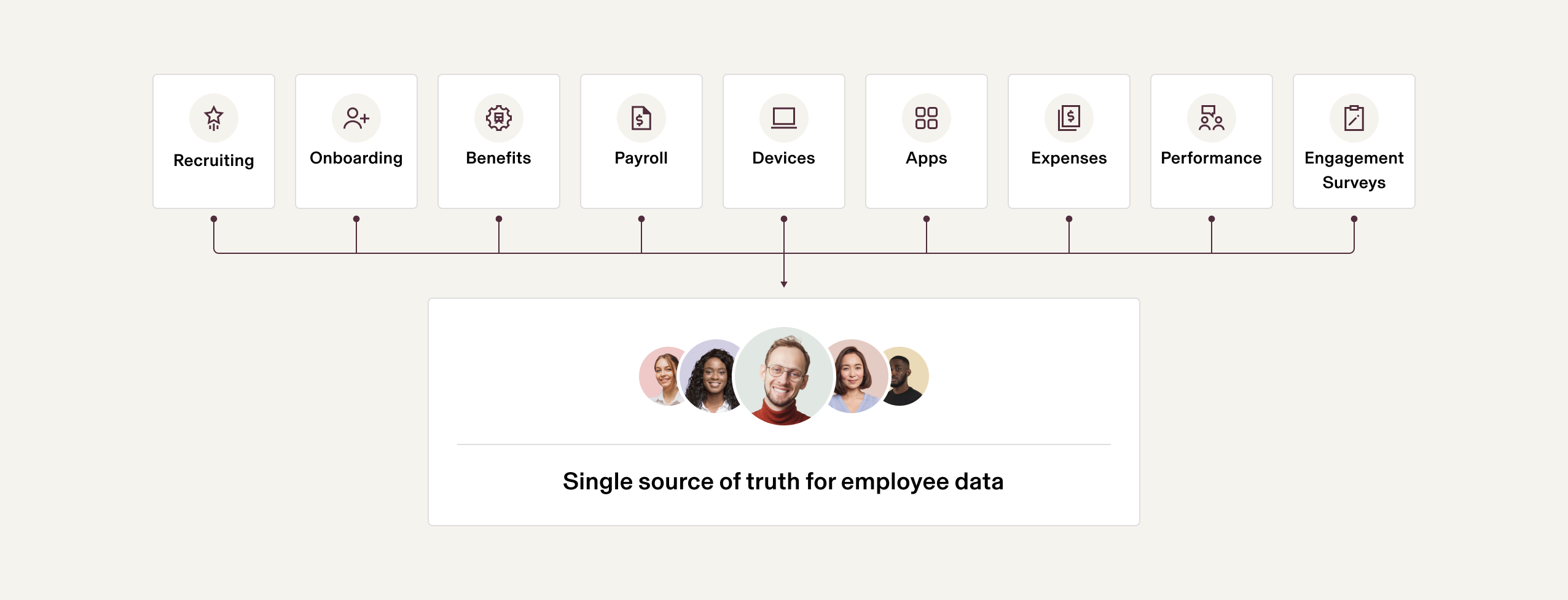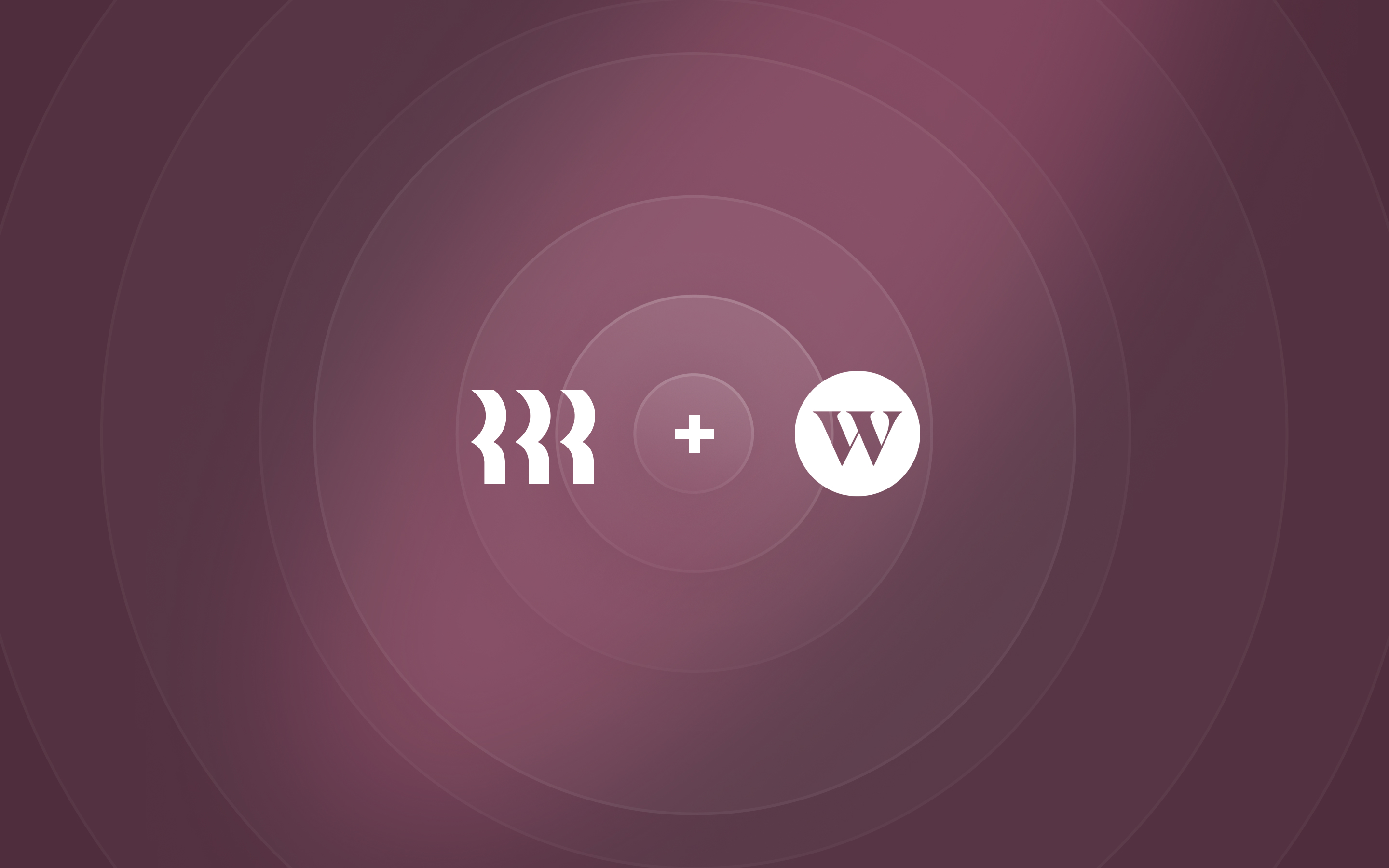The hidden weakness putting your 2024 HR goals at risk

With 2024 planning underway, the pressure on HR leaders to drive business outcomes is at an all-time high. Boost employee retention, improve team performance, do more with way, way less!
Despite this pressure, most companies aren’t looking to expand their HR department in the coming year—in fact, the HR function took a huge hit in key industries this year, accounting for 28% of tech layoffs in 2023. So, how will you lead an overworked, understaffed team in achieving your loftiest goals yet?
You need your HR tech to work harder. With the weight of make-or-break company initiatives on your shoulders, it’s time to evaluate your current HR tech stack: do the systems your team depends on empower them or get in their way?
We’re willing to bet it’s the latter. Read on to see why, and how to address this weakness before it puts even your best-laid 2024 plans at risk.
How could tools designed to make you more efficient do the exact opposite?
Even a quick walk through the 2023 HR Tech conference revealed a big problem: the HR industry has become oversaturated with an explosion of SaaS solutions. The average organization now invests in 16+ HR systems, often with overlapping functionality.
“All-in-ones” vs. point solutions
Nearly every single company today relies on an HR technology stack consisting of point solutions and “all-in-ones.”
- Point solutions offer deep functionality for the problem they solve, but they operate in a vacuum—ignoring how their individual function fits into the bigger picture of workforce management.
- “All-in-ones” are often legacy providers that were originally designed as point solutions. They set out to give HR a centralized place to solve a variety of use cases, but as they grew, they got clunky. They piled on new functionalities without the proper infrastructure in place. Bottom line: these so-called “all-in-one” solutions are poorly integrated systems, with mismatched data, jumbled under a single logo.
Ultimately, point solutions and “all-in-ones” have the same underlying weakness: they were both designed too narrowly from the start. That has a seismic impact on you, your team, and your company’s overall employee experience.
The fatal consequences of siloed HR systems
Everything you need to accomplish in the next year and beyond will run through your HR systems. Whether you’re patching together point solutions or navigating clunky all-in-ones, there are two major consequences of operating with a siloed HR stack.
Consequence #1: Your team can’t focus on strategic work when they’re bogged down by manual tasks
Can you pull this turnover report? Can you offboard this employee? Your HR team is on the receiving end of these questions every day, and they have no good way to quickly and confidently address them.
Beyond fielding requests, there are countless recurring processes that HR is responsible for managing, like onboarding. For every new hire, your team needs to manually transfer all their personal info from your ATS into your HRIS, then into your benefits administration software to add health plan selections, payroll to add compensation information—and so on. With all these steps, the manual tasks pile up and you’re more prone to costly errors.
Your star performers want to feel empowered to add value to the business, not troubleshoot why someone didn’t get paid the correct amount. But they’re playing a never-ending game of whack-a-mole with admin tasks, system errors, and data requests. There’s no time left to be proactive about building a high-performing team, improving the employee experience, and growing the business.
Consequence #2: Your team can’t get actionable insights from disconnected data
HR systems house information on the most vital asset in any organization: its people. So why is HR gravely underutilized as a strategic partner?
When your employee data is fragmented across siloed systems, your people analytics are limited unless you invest in significant resources. To analyze your data, you’d need data engineers to structure it, SQL experts to query it, and business analysts to build dashboards to visualize it.
How do you know if your candidate screening process is yielding the right hires without comparing interview feedback with actual performance reviews down the line? How will you optimize employee training when your performance review data is not connected to your LMS data?
Your HR team—and everyone else at your organization—can’t derive actionable insights without the full story of employee data. With only one piece of the puzzle, it’s nearly impossible to spot potential risks around headcount, retention, and turnover rate. And in this uncertain macroeconomic climate, checking your vitals early and often is crucial.
Breaking down the silos: Unlock the full potential of your HR team
Instead of starting with a single use case and then tacking on other solutions as an afterthought, Rippling had a holistic vision from day one: to create a unified workforce management platform, with a single source of truth for employee data.
With Rippling, your employee data isn’t tied to one specific app or another; it’s the same across payroll, time and attendance, learning management, performance management, or any of our other apps.

Here’s how a unified platform can free up your HR team’s time for more strategic work and empower data-driven decision-making across your organization.
Powerful automations free up time for strategic work
With a single source of truth for up-to-the-minute employee data, your team doesn’t have to reenter information across every system when an employee gets promoted or moves to a different state. The second this happens, your software automatically triggers every downstream change in a single flow, from updating PTO policies to granting additional security permissions.

In addition to these automatic downstream updates, Rippling comes stocked with 100+ out-of-the-box workflow automations—on top of the custom automations you can create to streamline your company’s unique processes. Once you eliminate repetitive admin tasks, your HR team is free to focus on solving the hard problems and creating a better experience for your employees.
Robust, real-time reporting fuels strategic decision-making
With a centralized hub of employee data, your reporting capabilities are limitless—and you’re armed with powerful insights to drive decision-making across your organization.
For example, are you looking to identify which people at your company are the strongest interviewers, or the best at hiring candidates who go on to be top performers? With Rippling, you can run a cohesive report that combines your interview feedback data with your performance review data.
As a result, you could ensure your best interviewers are on the panels for the urgent hires your business needs to get right in 2024. With a single source of truth for employee data, HR becomes an invaluable driver in the success of your organization.
Set up your HR team for success in 2024 and beyond
Don’t let your HR tech get between you and your 2024 goals. If you’re relying on disconnected tools under the guise of “all-in-one” software, you’re not only sacrificing time and money, but you’re missing out on actionable insights that could make or break your business.
The most innovative, strategic HR leaders are doing more with less by streamlining their processes and validating decisions across the organization with data on the most valuable asset they have: their employees.
Rippling and its affiliates do not provide tax, legal, or accounting advice. This material has been prepared for informational purposes only, and is not intended to provide, and should not be relied on for, tax, legal, or accounting advice. You should consult your own tax, legal, and accounting advisors before engaging in any related activities or transactions.









